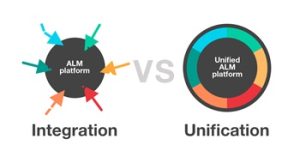
The terms unification and integration are often used interchangeably, but they don’t mean the same thing. Here Genetec takes away the confusion with an explanation of the core differences between a unified physical security system and an integrated one.
What is a unified physical security solution?
A decade ago, having a unified physical security system meant that your video management solution and access control system worked together to enable visual verification on access control events. Since then, the number of different security applications and sensors that organisations use to secure their environments has exploded.
They’ve also become more specialised, which means in addition to your video monitoring and access control systems, you might also need smart video analytics, SIP communications, automatic license plate recognition, point of sale, radar, transaction management systems, and so on. And all of these different sensors can trigger security-related events where you’ll need other points of data before deciding on your next move.
Today, having a unified physical security system means bringing all of these sources of data, seamlessly together, within one single interface.
Unification is not integration
The terms unification and integration are often used interchangeably, but they don’t mean the same thing. Unification is the process of being united or made into a whole. A unified physical security platform consists of a suite of products developed as one unit. It means you can turn different systems on or off, but you can’t break connections – because there aren’t any. A unified solution is built from the ground up to consolidate all of the data that you gather, so you can easily and efficiently manage security policies, monitor events, and run investigations.
Integration is the result of combining one thing with another.
An integrated physical security platform is made up of connections. If one connection breaks, it can affect all the others. The more connections you have when joining one system to another, the more costly and complicated upgrades and maintenance become.
With integration, you’re deploying distinct security solutions from multiple vendors, purchasing numerous servers, attending various vendor-specific trainings, and maintaining several systems. Integrated systems are siloed, which makes consolidating large amounts of data time consuming and inefficient.
What about flexibility for the future?
Does an organisation have plans to expand, change, or modernise? If so, then with the increasing amount of new security technology and sensors available, open architecture is a necessity.
On paper, an integrated physical security system gives you the flexibility to add new sensors or applications. But in reality, trying to add more and more data to a user interface that’s designed for a single set of activities – like video monitoring and investigations – quickly shows its limits.
As soon as one system needs to be updated, compatibility issues are likely to appear and slow down or even prevent updates. A unified physical security system with open architecture and an expansive ecosystem of partners offers flexibility and evolves with you as your challenges and needs change.











